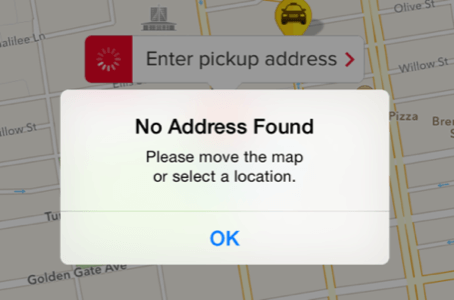This post first appeared on the Ferenstein Wire, a syndicated news service; it has been edited. For inquires, please email author and publisher Gregory Ferenstein.

Uber is systematically wiping out taxis in San Francisco. Between March 2012 and July 2014, average monthly trips per taxicab plummeted 65%, to 504 from 1,424. In an effort to save the industry, the startup Flywheel has begun outfitting taxis with technology designed to provide Uber-like convenience via smartphone hailing and payments.
But after testing the competitor’s latest innovation, it’s clear that Uber’s counterpart is having trouble keeping up. (though maybe that’s unsurprising, since Uber has pulled in 150 times the investment Flywheel has managed so far: $5.9B vs. $35M.)
Uber-fying Taxis
I was excited to test out Flywheel’s latest feature, in which its app syncs automatically identifies when you’ve climbed into a Flywheel cab, allowing you to pay with your phone without further fuss. This seemed like an impressive innovation. Indeed, Fortune just hailed the feature as evidence that perhaps taxis could still compete with Uber and its ilk.
Unfortunately, the execution was rather frustrating. Not only did the app fail during my trip; so did other aspects of the process that have long since been solved by other ride-hailing startups.
Here’s how it went:
- I went outside to grab a cab. But, waiting for an open cab in San Francisco during the busy post-dinner rush hour near Russian Hill took about five times longer than e-hailing an Uber from the comfort of the restaurant.
- When I eventually snagged a Flywheel-enabled cab, the app didn’t recognize I was in a Flywheel car. So I had to exit the cab, paying $4 for a mere five second trip.
- Eventually, I trekked up to a series of hotels where I knew I could find a Flywheel-branded cab. Success! The app’s prompt switched on as soon as I walked up to the Flywheel cab.

- Midway through the ride, though, the app stopped working and gave me a notice that there was a fatal error.
- The driver called in the problem to a rather disinterested dispatcher, who informed the driver in no uncertain terms that this was not something he could fix.
- So I asked the driver to stop so I could exit the cab and start over. But when we pulled to the side of the road, Flywheel couldn’t find a nearby address, and I spent five minutes trying to name locations near the area with a known landmark.

- After we found an address and eventually made it to the location, I had to negotiate with the driver how to apply the tip from the first part the ride. It took us some time before we figured out that he should charge me a certain amount and I shouldn’t give a tip.
Less Than Friendly Service
Only part of this was a Flywheel problem, although it should certainly be able to make its app and its address-finding technology work better. In other respects, though, the company is simply making the best of a bad situation.
In particular, Flywheel’s latest feature aims to solve a problem created by government-mandated scarcity. Local governments limit how many licensed cabs they allow on the road. As a result, it’s often quicker to hop in a cab that happens to drive by, rather than wait a few minutes for a smartphone-hailed cab to show up. (Hence, Flywheel’s newest feature.)
But, it can take a long time for e-hailed cabs to arrive precisely because the taxi licensing system restricts the number of cabs on the road. Uber is adding drivers at a crazy pace and wait times have shrunk to a few minutes or less.
Flywheel’s latest feature is an artifact of a legal system that Uber could soon dismantle. Flywheel is making taxis better than their former selves, but not better than the competition.
Lead image by Nathan










